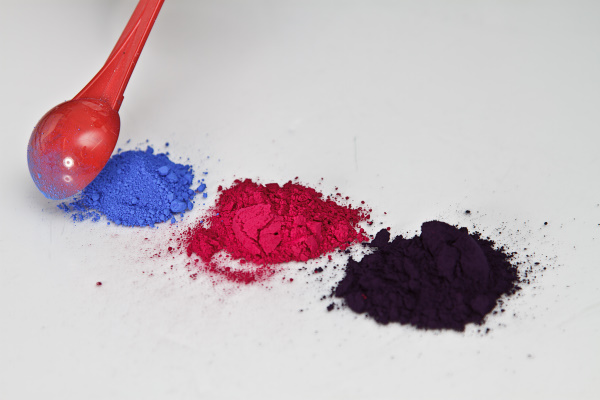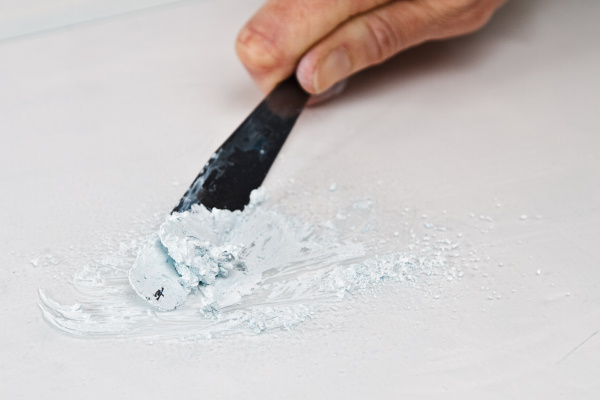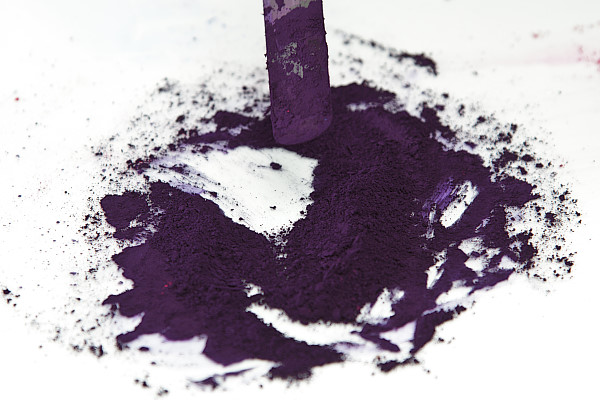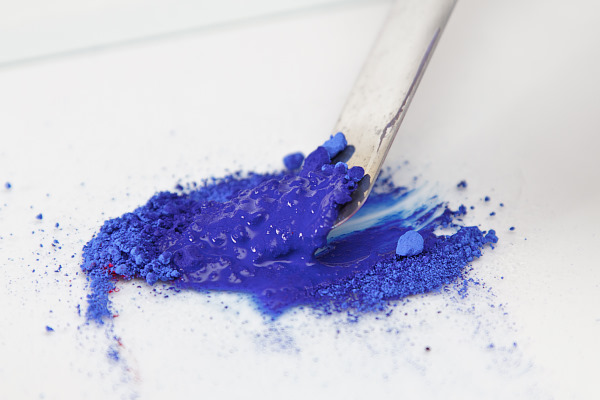 © Marc Volquardsen, 2012
© Marc Volquardsen, 2012
As I have got more and more interested in making pastels by myself I eventually ended up with having a closer look at pigments. First I thought I will write a short summery about it, but oh boy, I can’t recall what made me think that in the first place. It’s tough in German, but even tougher to translate this to English. So I keep it very basic, but I do advise you to do some further readings, because it is so interesting. The links and books suggestions from my side are all in German, but maybe some of my readers do have some recommendations. Please leave it in a comment.
The basis for all painting colors is the pigment. At first it’s only a powder and according to which binder (some kind of glue) you add it turns into oil, acrylics-, watercolor or pastel. Pigments are classified according to their chemical structure into organic and inorganic pigments, which can be natural or synthetic.
Organic:
- natural: Indian Yellow, Indigo
synthetic:Chromgelb, Permanent Yellow, Phtalo-Cyanin- green,
Inorganic:
- natural: mineral earths such as ochre, raw, umber
- synthetic: cadmium yellow, zink oxide
Depending on its particles size, the attributes vary from pigment to pigment. The difference between for example light fastness and consistency may vary a great deal. Forty piles of pigments laid out next to each other may look the same but they certainly aren‹t. Pip Seymour points out that synthetic organic pigments (e.g. Heliogreen) can be difficult to disperse into water and might need wetting agents, such as Disponil or Ox-gall. On the other hand there are some pigments who need more binder to hold the particles together, whereas there are some, which don’t need a binder at all e.g. (Mars Yellow, Raw Sienna)

© Marc Volquardsen, 2012
In the first stage after adding water Titanium White feels like chewing gum before it turns into a smooth paste.

© Marc Volquardsen, 2012
This violett doesn’t disperse water at all.

© Marc Volquardsen, 2012
Ultramarin blue easily disperses into water.


Dolores Saul
Hallo Astrid,
das ist wirklich hochinteressant. Du hast Dir so viel Arbeit gemacht und die Pigmente in ihrer Art und Herstellung toll erklärt. Nun ist mir klar, warum ich bei manchen Softpastellfarben kleine Kratzer auf dem Sennelier Card Papier ungewollt erzeugte. Danke für die reichhaltigen Infos.
Bei dieser Kälte warte ich aber eigentlich auf ein Bild von Dir, mit zugefrorener Elbe ;-). Bei einem TV Bericht sah ich den Fluss, die im Eis festsitzenden Schiffe und Eisbrecher, alles in einem schemenhaften Licht getaucht.
Lieben Gruß
Dolores
Astrid
Hallo Dolores,
es freut mich, wenn ich das Verständnis für das Material erweitern konnte…:-)
Was die Elbe betrifft: Wir waren am Wochenende tatsächlich dort. Im Beitrag am Mittwoch gibt es kalte Grüße.
Casey Klahn
I was just going to the basement to do some of this pastel making. What a treat to see your photots and report – I look forward to more.
My goals: a set of clear grays/ warm and cool. Blue-grays that are clear.
My last accomplishment: a perfect set of olive green sticks!
Astrid
Hi Casey,
I have found out that makink pastel sticks can be somewhat easy and on the other hand be very tricky. Now I have to find out how much wedding agents is needed. (One drop, two, three…….)
martin
Betr.: Herstellung von Pastellen
Zur Herstellung von kantigen Pastellen habe ich mir im Baumarkt eine U-förmige Plastikleiste (jede Kante des U 1 cm lang) von 1 m Länge gekauft und sie in etwa 7 cm lange Stücke geschnitten.Die Enden werden mit kleinen Holzklötzchen (auch 1 cm Kantenlänge) verschlossen. Der »Pastellbrei« , der recht flüssig sein kann, wird dann in die Plastikform zwischen die Holzstücke gegossen. Vorher wird die Form mit Silikonspray eingesprüht. Nach einigen Tagen wird ein Holzstück entfernt und der Pastellstift mit dem anderen Holzstück aus der Form geschoben.